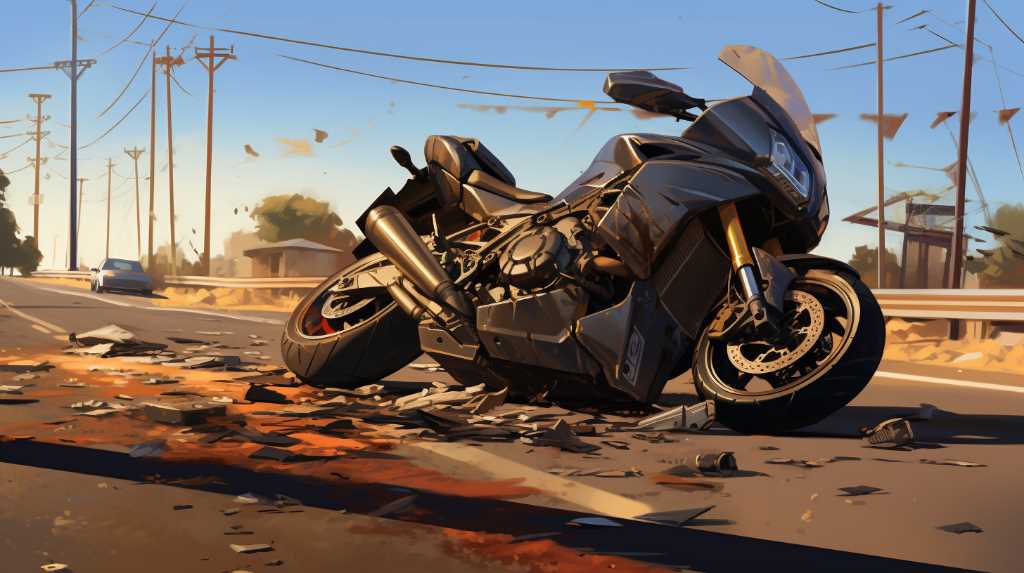
In the intricate dynamics of road traffic incidents, particularly those involving multiple motorcycles in a rear-end collision, the determination of fault is a nuanced process. It requires a thorough understanding of the events leading up to the accident.
The intricacies of such incidents often involve an analysis of each rider’s adherence to traffic laws, their situational awareness, and their adherence to safe riding practices. The principle of comparative negligence may also come into play, apportioning fault based on the degree of each party’s contributory actions.
A meticulous investigation is imperative, typically involving law enforcement and insurance investigators, who gather evidence, interview witnesses, and examine the mechanical integrity of the motorcycles to establish a clear picture of the accident’s causality.
This assessment forms the basis for legal and insurance outcomes post-collision.
Understanding Rear-End Collision Dynamics
When looking into rear-end crashes, especially with motorcycles, it’s important to look at how the vehicles behave and what happens right after they hit each other. To really understand these crashes, we need to know about the way momentum is passed along, how well the brakes work, and how quickly the riders can react. Motorcycles can easily lose balance and can’t handle sudden stops or turns as well as cars can.
If one motorcycle hits another from behind, it can lead to a chain reaction where many bikes crash. To figure out what went wrong, we need to look closely at how far apart the motorcycles were, how fast they were going, and whether the riders were paying attention. This careful study helps us figure out who is to blame and how these kinds of pile-ups happen.
Determining Fault: Key Considerations
Determining the party at fault in a rear-end collision involving three motorcycles requires a meticulous analysis of the riders’ behavior, road conditions, and adherence to traffic laws. Investigators must systematically evaluate evidence, such as tire skid marks, vehicle damage, and eyewitness accounts, to reconstruct the event sequence.
Factors like speed, following distance, and reaction times are crucial in establishing negligence. It is also essential to consider whether any of the motorcyclists were in violation of traffic statutes, such as tailgating or distracted riding.
Ultimately, liability may be apportioned among the parties based on contributory or comparative negligence laws, which take into account the degree of fault of each rider involved in the collision.
Impact of Traffic Laws on Motorcyclists
How do traffic laws affect who is blamed when a motorcyclist gets hit from behind?
Traffic rules are like instructions for how all drivers, including those on motorcycles, should act on the roads. They tell drivers to keep enough space between vehicles, follow speed limits, and pay attention to traffic lights and signs.
If there’s a crash from behind, and the motorcyclist in the back didn’t keep a safe distance, they’ll likely be blamed because they had the chance to stop it from happening. On the other hand, if the motorcyclist in front did something sudden and unexpected that broke the rules, they might be the one held responsible for the crash.
Comparative Negligence Explained
Comparative negligence is a way to figure out who is responsible for a crash involving three motorcycles. It looks at how much each person involved contributed to the accident. To do this, it takes a close look at what happened right before the crash, like how the traffic was, whether the motorcyclists were following the rules of the road, and what each rider was doing. This is important because accidents often happen due to several reasons at once. Comparative negligence tries to fairly decide how much each person is to blame.
For example, if one motorcyclist was speeding while another didn’t signal before turning, both actions might have played a part in the crash. Based on these actions, comparative negligence assigns a percentage of fault to each rider. This matters a lot when it comes to money. If someone got hurt or their bike was damaged, the amount they can get in compensation will be less or more depending on how much they were at fault. This way, the cost of the damages is shared fairly among those who caused the crash.
Investigative Steps Post-Accident
After a crash where three motorcycles hit each other from behind, police start looking into what happened by checking out the crash area for clues. They look for things like tire marks and where the bikes ended up, which helps them figure out what each rider was doing before they crashed. They take a lot of photos and measure everything carefully.
The officers also ask the riders and any people who saw the crash to tell them what they saw to understand the events leading up to the crash. They check the bikes to see if any parts weren’t working right, which might have caused the crash.
If there are traffic cameras around, they’ll watch that footage, too, and they’ll see if the road was in bad shape or if the weather might have had something to do with the accident.
Conclusion
To figure out who caused a crash with three motorcycles hitting each other from behind, we need to look at everything very closely. It’s important to see who was following the rules of the road and who wasn’t, and how each rider’s actions might have played a part in the crash.
By digging into the facts and the law, we can make sure that the person who caused the crash is held responsible in a fair way. This makes sure that when we decide who is to blame, we’re being honest and just.